Hello RC Soup readers. This is just one of those important basic pit tips that many of us may forget about, the proper disposal of Lithium Polymer (LiPo) batteries. We all use them, we all watch them carefully for signs of damage/swelling. Even with the advances of today’s battery technology, they are still an inherent fire risk and should be treated with care at all times. With that being said, once a Lithium Polymer (LiPo) battery pack has been properly neutralized, it can be discarded in the trash as they are environmentally friendly.
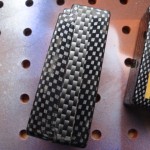
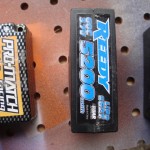
ProMatch 2s Saddle Pack-puffed Reedy 2s Saddle Pack-puffed
I recently had a couple of my saddle pack lipo batteries puff up slightly but to the point I could not use them in my Durango DESC410r any longer. Manufacturer recommendations are once a battery pack begins to puff up you have to neutralize the battery and dispose of properly as soon as possible.
It was time to neutralize these 2 battery packs and discard them. I’ll be honest, I was slightly nervous doing this at first. We all have heard the horror stories of lipo battery fires. This was simple and safe and will certainly give you some piece of mind if you have some swollen batteries in your garage, home or pit trailer. Total time once you have all your materials together is about 10 minutes, start to finish.
I found these simple instructions at
http://thunderpowerrc.com/PDF/DISPOSAL-OF-LIPO-BATTERIES.pdf (instructions are at end of this article as well)
I downloaded the PDF and printed it off and went out to the garage. It doesn’t get much easier than this.
Materials you will need:
QTY-2 1 gallon plastic water jugs
QTY- 1/2 cup of salt
QTY- 2 six inch pieces of duct tape
Scissors
Measuring cup (1/2 cup)
Small funnel
To prepare for this, I took an empty 1 gallon water jug and cut around the top of the jug, back around to the handle to create a “flap”. This will serve 2 purposes, one to provide a large opening to place the batteries into the jug and also a large opening to pour in your salt water solution.
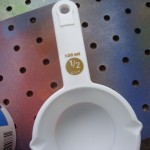
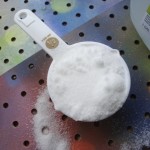
According to the directions, you use 1/2 cup of salt per gallon of water. Using 1 gallon jugs simplified this process. I measured out the level 1/2 cup of salt and using a small paper funnel, poured the measured salt into the full jug of water. You will have to pour off a 1/2 pint or so once the salt is added so there is room to shake the mixture up. Once the salt is in, cap the jug and while holding the cap, vigorously shake the water jug until all of the salt dissolves into solution.
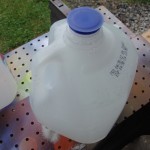
Place your defective LiPo batteries into the jug w/ the “lid” cut into the top. Now you can pour in your salt water solution from the other jug. Use a couple of pieces of duct tape to hold the “lid” down. It is not sealed tightly per the directions but will keep funk from falling into your bucket during the neutralizing period of 2 weeks.
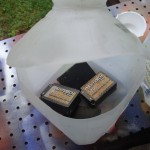
Mark your calendar and after 2 weeks, take the batteries out of the jug, wrap in newspaper and toss in the trash.
Once my packs had been neutralized, I did take my voltmeter and check for voltage. They were both at 0.0 volts. Very nice.
I washed out the jug and have since saved my LiPo disposal “kit” for future re-use.
Good luck, be safe and have fun.
Here are the instructions found on the ThunderPowerRC website:
** DISPOSAL OF LIPO BATTERIES **
Unlike NiCd batteries, lithium-polymer batteries are environmentally friendly.
For safety reasons, it’s best that LiPo cells be fully discharged before disposal (however,
if physically damaged it is NOT recommended to discharge LiPo cells before disposal –
see below for details). The batteries must also be cool before proceeding with disposal
instructions. To dispose of LiPo cells and packs:
1. If any LiPo cell in the pack has been physically damaged, resulting
in a swollen cell or a split or tear in a cell’s foil covering, do NOT discharge the battery.
Jump to step 5.
2. Place the LiPo battery in a fireproof container or bucket of sand.
3. Connect the battery to a LiPo discharger. Set the discharge cutoff
voltage to the
lowest possible value. Set the discharge current to a C/10 value, with “C” being the
capacity rating of the pack. For example, the “1C” rating for a 1200mAh battery is 1.2A,
and that battery’s C/10 current value is (1.2A / 10) can be used,
such as a power resistor or set of light bulbs as long as the discharge current doesn’t
exceed the C/10 value and cause an overheating condition.
For LiPo packs rated at 7.4V and 11.1V , connect a 150 ohm resistor with a power rating
of 2 watts (commonly found at Radio Shack)to the pack’s positive and negative terminals
to safely discharge connecting it to an ESC/ motor system and allowing the motor to run
indefinitely until no power remains to further cause the system to function.
4. Discharge the battery until its voltage reaches 1.0V per cell or
lower. For resistive load type discharges, discharge the battery for up to 24 hours.
5. Submerse the battery into bucket or tub of salt water. This container should have a lid,
but it should not need to be air-tight. Prepare a plastic container (do not use metal) of cold
water. And mix in 1/2 cup of salt per gallon of water. Drop the battery into the salt water.
Allow the battery to remain in the tub of salt water for at least 2 weeks.
6. Remove the LiPo battery from the salt water, wrap it in newspaper or paper towels and
place it in the normal trash. They are landfill safe.



 September 8th, 2012
September 8th, 2012  Jim
Jim 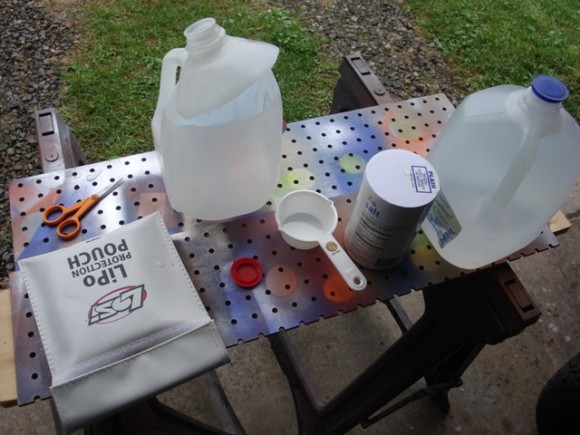
 Posted in
Posted in  Tags:
Tags:
Excellent article! Thanks!